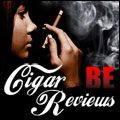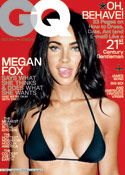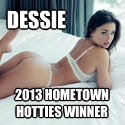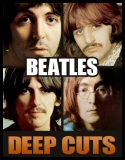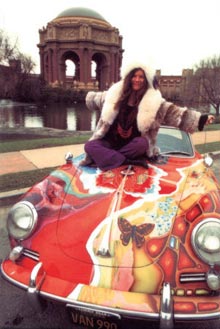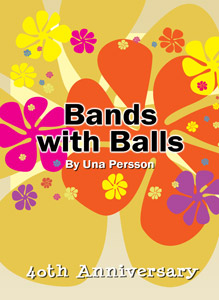
What comes to your mind when you think “Summer of Love?” Long-haired, stoned hippies with flowers in their hair? Tie dye and long, flowing skirts? The stench of patchouli? Sgt. Pepper’s Lonely Hearts Club Band? Scott McKenzie’s banal classic?
Are those the images and sounds most readily associated with the 1967 event? Or have those become the de facto archetypes indelibly linked with the entire hippie era, reinforced in perpetuity by the media?
Sure, the soundtrack to the Summer of Love had plenty of hippy-drippy overkill, psychedelic folk-rock experimentation and drug-fueled musical meandering. But it wasn’t all peace and love, not by a long shot.
The Monterey Pop Festival, for instance, was the first major American appearance by Jimi Hendrix, already a star in England and the rest of Europe. He’d been making headlines all year, first by starting his concert trend of setting fire to his guitar that March (while on tour with Cat Stevens and Engelbert Humperdinck, of all people; with tourmates like that, who wouldn’t want to set fire to something!), then getting kicked off the Monkees tour by the Daughters of the American Revolution due to his “lewd and indecent” stage conduct. (In truth, he abruptly quit the tour after a few dates.)
The Who – hardly a band you’d associate with love-ins – were kicking around the US for most of the year as well. The gritty, loud and decidedly high-energy British R&B unit’s first concert in America took place in New York on March 25. Popular legends hold that the members of the band suffered permanent hearing loss from their loud concerts, and that Townshend's right ear was damaged as a result of being too close to the drum kit when Keith Moon detonated an oversized concussion bomb in it at the destructive end of their appearance on the "Smothers Brothers Comedy Hour" that same summer. The show was also the first time most American audiences saw a band – any band! – destroy their instruments (Hendrix’s aforementioned guitar-burning had more the flavor of a pagan ritual than any kind of destructive element).
Yes, all the bands at the MPF played for free (except Ravi Shankar, unlikely capitalist). More than 200,000 people attended (paying the $1 entrance fee), with all revenue donated to charity. There were also no deaths, no injuries, no overdoses, no violence and no arrests. The Monterey Deputy Chief of Police was quoted as saying "We've had more trouble at PTA conventions” (note from Mojo Flucke: Stop copying off of my paper, Una), a marked contrast to the legendary strife accompanying Woodstock (summer of ’69) and Altamont (end of ’69, end of an era for a lot of people) in the coming years.
For many, folk-rock and its crazy cousin, psychedelic rock, were the order of the day. The vapid "San Francisco (Be Sure to Wear Flowers in Your Hair)" – written by the Mamas & the Papas’ John Phillips to promote the MPF – became the theme song to the entire movement. While some of Sgt. Pepper’s rocked, much of it was awash in psychedelic excess. Many popular bands that year – Jefferson Airplane and the Grateful Dead, of course, but including the Fifth Dimension, the Turtles, Joan Baez, Peaches and Herb, the Association, Simon & Garfunkel, and Peter, Paul & Mary – were either dipping their toes in the hippie waters, or jumping in with both feet.
But many other bands either didn’t buy into the hippie dream, or were simply taking a very different class of drugs (booze, pills and/or heroin vs. weed and acid, for instance). Or they just played a different, tougher kind of music, music not so easily subordinated by jam-band trippiness. The Velvet Underground released their seminal first album early in ’67. It had tinges of psychedelia, but more of an East Coast (and heroin and pills-influenced) version of it. The VU made no secret of their disdain for the whole hippie counterculture, either. Otis Redding (backed by Booker T. & the MG’s) played Monterey, for instance. Definitely not a hippie, Redding died in a plane crash on December 10 of that year, two days after recording “(Sittin’ On) the Dock of the Bay.” Janis Joplin (backed by Big Brother & the Holding Company) catapulted to national fame after the Summer of Love. Blues-rockers were everywhere that year: Canned Heat, Paul Butterfield Blues Band, Steve Miller Band, the Blues Project…not a flower-bedecked hippie in the bunch.
Other musical ‘yangs’ to the wimpy saccharine ‘ying’ so easily associated with the summer of ’67 include quintessential power trio Cream, the trippy-but-tough prog rock of Pink Floyd (who put on the first ever rock concert with quadrophonic sound in England that May), the anti-everything Mothers of Invention, the soulful sounds of Aretha Franklin, Arthur Conley and Wilson Pickett, the boundary-pushing jazz of Miles Davis and John Coltrane, the electric blues of Howlin’ Wolf and Albert King, Ten Years After, the Spencer Davis Group, Vanilla Fudge, the Animals.
1967 also saw the beginnings of some storied (and decidedly non-flower-power) musical careers, namely Ted Nugent, George Clinton, Sly & the Family Stone, Blue Öyster Cult, Captain Beefheart and the Stooges, to name a few.
And while many bands applied the “lessons” of the Summer of Love and the hippie subculture to their own quirky ends – the Rolling Stones’ Their Satanic Majesties Request was released toward the end of ’67, same with the Who’s odd concept album The Who Sell Out (thankfully, both bands quickly shed the psychedelic mantle and returned to the tough, gritty music they played best the following year) – these anomalies can easily be viewed (albeit cynically) as attempts to cash in on the bandwagon). Hey, the same can be said of Peter Paul & Mary’s awkward “I Dig Rock and Roll Music.” And, lest we forget, in 1967, the Monkees outsold the Beatles and Rolling Stones combined!
What the Summer of Love really did was take the shackles off, redefine what was sonically possible and encourage musical experimentation of all kinds. The Who summed it up in their first US hit, and their toughest, ballsiest-sounding song to date, “I Can See for Miles.” Musically, now everyone could.

